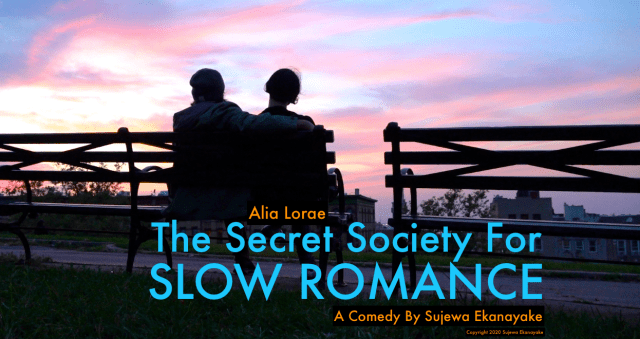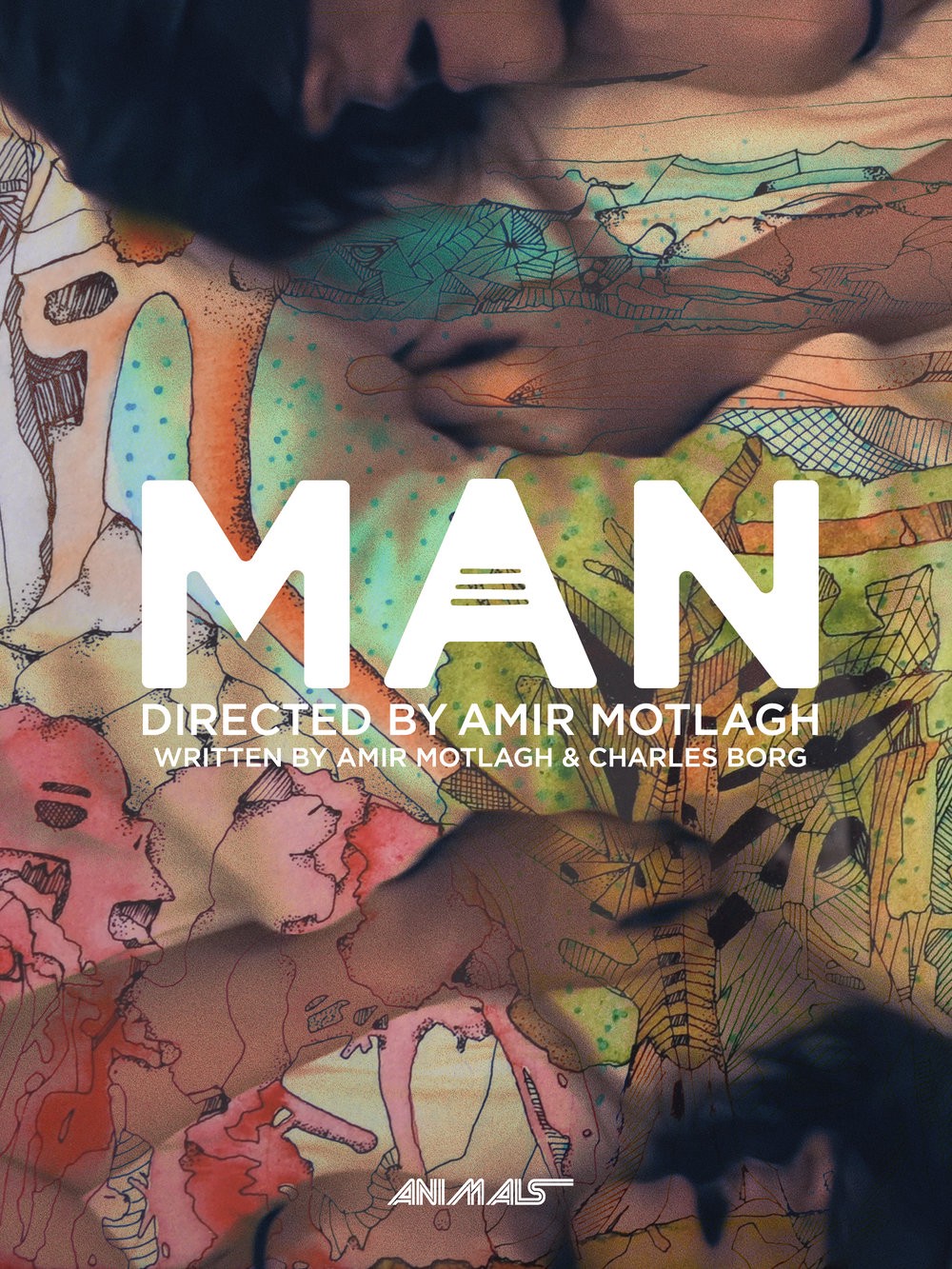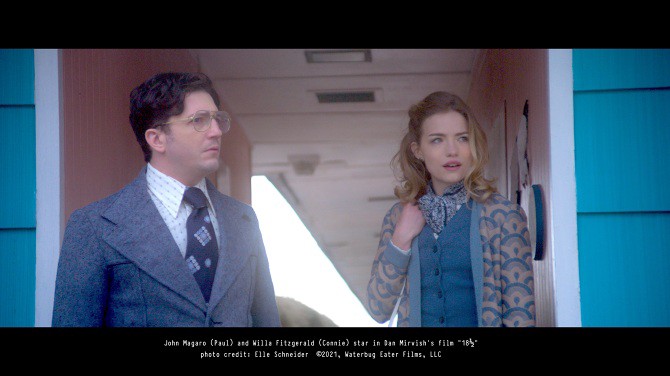Spiritual Lessons in The Secret Society For Slow Romance
When I first watched The Secret Society For Slow Romance, I loved it for a few reasons. It felt happy and joyous. It is a kind movie. I felt as though it had some important teachings to impart to viewers. It contains a lot of information for those looking to embark on independent filmmaking, and it contains important messages about cultivating and creating happiness. These lessons are part of the driver of Rene’s behavior throughout the movie and are part of the magical end. The Secret Society for Slow Romance explores how spiritual concepts interact with artists who are process-driven and those that are product-driven. The New York City of The Secret Society For Slow Romance is a world of magical realism that allows for the movie’s joyous exploration of the power of limitless goodwill.
With that said — there are spoilers ahead (watch the movie here).
The Four Brahmaviharas
‘There’s this new thing I’m into that I’m kind of excited about, it’s called the Four Brahmaviharas,’
In this, the very first spoken line of the entire film, Rene introduces the concept of the Four Brahmaviharas to Allyson. I remember laughing at it the first time because I knew the four Buddhist virtues were far from ‘new.’ In case you, like Allyson (and me!), didn’t learn about them in school, the Four Brahmaviharas are also called ‘the four immeasurables.’ There are lots of names for them because they are a key concept. Rene calls them the “Houses of the Gods,” which is another way of saying Brahma and vihara (divine abodes). ‘The Four Brahmaviharas’ describes the states of the gods, who were beings of unlimited amounts of loving-kindness, compassion, empathetic joy, and equanimity. Buddhism teaches that cultivating these virtues is essential to creating happiness.
Rene states at the beginning of the movie that he’s been ‘getting into them’: the rest of the movie demonstrates how Rene integrates these virtues into his work, life, and habits. Rene’s opening explanation of them to Allyson (and the audience) is part of that practice.
First, it’s key to understand how these four virtues lead to the cultivation of happiness. The first and fundamental virtue to cultivate is goodwill, which is wanting happiness for others (‘willing good’ if you will). Even your enemies. Practicing goodwill eclipses a simple thought of goodness in someone’s general direction: the true application of goodwill challenges us to visualize the recipients of goodwill as not only succeeding and being happy but also avoiding causes of unhappiness.
When goodwill encounters someone who is suffering, it expresses the next virtue — compassion. Compassion is the virtue that will want to intervene in the suffering of others to make it stop.
If goodwill encounters someone who is happy, the virtue expresses itself as empathetic joy. This means sharing in the happiness of others and wanting it to continue. Equanimity is the wisdom of understanding which to apply to what situation (and how?) by approaching the situation in a state of calm and even mind. It is a way to temper/direct the others and keep them in check.
Karma has a lot of lessons packed in it — one is that we experience things like happiness and sorrow based on a combination of our past and present intentions. Another, extending from that one, is that we are architects of our happiness and suffering, and so are other people. The way that you can help other people to be happy is to give them the tools to create their happiness. If one is engaged with the Four Brahmaviharas, they will be very interested in helping others to achieve happiness — and extend moments of joy.
Massive Positivity, Meditation, and Grounding
When Allyson asks if these approaches reduce stress, Rene details some of the ways he embraces these practices. ‘At the end of the day, wish everyone well: friends, family, enemies, hope that everyone has an easy life.’ He talks about meditation. He then outlines his massive positivity thinking practice, “I think about 1,000 positive things about the universe, 100 personal accomplishments and 10 mistakes, my own mistakes, that keeps me kind of calm and grounded and all that stuff keeps me happy every day.”
Wow, that’s a lot indeed, Allyson.
In this opening scene, Rene not only gives Allyson the tools to architect her happiness he hands her a physical manifestation of that in the form of the microphone (and ‘some other things for the shoot’). Rene states that his filmmaking processes are driven by the happiness they create, and not the products that they produce. This is repeatedly contrasted to Allyson’s relentless production. When Allyson asks him how his career is in Chapter One, Rene goes to great lengths to explain how he measures his career in terms of happiness.
Rene outlines how his measurement of happiness and his goals have changed over time. The fact he has spent time considering how he can create in a way that cultivates happiness demonstrates he has learned that part of happiness is setting goals that transcend external validation (audience / critical acclaim). It is a gentle way of emphasizing to Allyson that her goals of fame and fortune may not spell happiness for her in the end.
Allyson takes this lesson to heart, and it is through her growth in cultivating her happiness that the magical end of the movie is possible. In earlier chapters, she insists that what she wants is to be famous and rich, while in the later chapters she talks about how it might be enjoyable to ‘make a great sci-fi movie with a higher budget.’ By the end of the movie, Allyson engages with filmmaking ideas and styles other than her own, and brainstorms with Rene in ways that support his vision and extend happiness — an echo of their earlier conversations. This contrasts her in the early moments of the film, where she talks about always needing to do something.
Part of the joy of The Secret Society for Slow Romance is in the fact that the act of filmmaking is a manifestation of happiness for these two characters. As Rene shares the knowledge he has gathered about creating films with Allyson, it’s yet another way he is giving her the tools necessary to manifest her happiness.
Rene is not the only teacher here. Allyson also has lessons to teach — lessons about when to move on, how to try new things, and how to find stillness amid frenetic, creative energy. After Allyson recounts the plot of her latest film project, Rene immediately reacts to Allyson with compassion. The two connect over this moment and this simple acknowledgment of shared pain. Rene then explores how he will ‘focus on the process, be glad you get to make a movie at all. You can’t control the audience or the critics, just work on the movie.’ It’s a way of reminding Allyson that though she has created a very clear metric of success, being rich, it is dependent on a variety of factors that are too far out of her control to produce happiness.
It’s hard not to concede, as Allyson does, that Rene has a healthy way of looking at it.
As she later admits, Allyson at this point still does not see happiness as a ‘goal.’ Later as she admits she “never really thought of happiness as a goal to achieve, I just kind of thought of it as something that happens like other things in life.”
In Chapter Two, Allyson opens up more about how she feels restless and feels the need to be active. Rene helps her to examine what happiness means to her at that moment — and they discuss the pressure to put on pretenses of happiness. They spend time expressing compassion for where the other is. It’s also an acknowledgment that action and stillness both have lessons to teach us.
Here it’s obvious that Rene’s initial interest in the Four Brahmaviharas has led him to think about larger goals. As discussed before, the application of goodwill on a large scale impels the practitioner to help others realize that happiness is within their reach. Rene’s goals begin to include helping more people but aren’t focused on filmmaking. Much like Rene’s compassion and equanimity in response to Allyson’s rapid-fire film ideas, Allyson’s response to Rene wanting to “end something like, you know, racism,” is even-tempered and compassionate. She understands this desire to help ease suffering. She understands why the dream is so big. She doesn’t disparage it, she doesn’t question it — she dreams it with him.
Think of the Possibilities.
Rene takes time to explain another technique he uses to foster happiness, which is to shut down his devices for two hours a day and think about the possibilities. This technique not only embraces the precepts of the ‘slow media’ movement, but it also shows that he gives attention to possibilities. He doesn’t consider them and move on, he spends time dwelling with them and within them, to understand not only what they might be, but how they might be achievable.
Their conversation then continues forward with Allyson driving Rene’s large ideas and visions back towards her physical understanding of happiness (filmmaking). Allyson demonstrates that she has integrated their earlier conversation with her current thinking by her expansions and compassionate suggestions to Rene about making his idea something that was more his. Instead of limiting her thinking to just helping Rene get the money (which would be expanding his ideas towards her goals), she expanded on his ideas with compassion for his goals and with the mind to increase his happiness.
It is in this second-act conversation between Rene and Allyson that the application of the four virtue to the creative life can most easily be seen. Their conversations reflect the application of compassion for those who suffer while attempting to extend joy for those who create. The impact of these notions on Allyson is easy to see. In the early moments of Allyson motoring through the city streets, her face is obscured from view as she moves relentlessly towards her goal. More and more moments of her standing, facing the beautiful city vistas view are interspersed as the movie progresses. Her face is in full view of the camera — often unmasked and smiling.
Examine and be Inspired by the Human History of Success
Rene’s relentless power of positive thinking leads him to examine moments of success. But he doesn’t ponder only his success. He says “I like to think of all the positive moments that humans have experienced in the 200,000 years we’ve been around. . . I think the entire human journey has been a great success.” When you think about the human journey from that perspective, it becomes easier to see how that applies to your own life. Seeing and thinking about humans have succeeded in the 200,000-year history is a good way to get yourself to imagine other ways of success. It is a good way to realize that though nature is indifferent to the human struggle, there is still success.
There are further demonstrations of Rene’s dedication to process, in one scene he shows a film he’s been working on editing. For the last 12 years. There’s a joke that writers have — that it’s never that a piece is finished, it’s that a deadline passes.
Rene would like that joke.
It is Rene’s slow, methodical dedication to processes that inspires the entire title — for romance, keep it slow. See what develops. Apply goodwill, compassion, empathetic joy, and equanimity to your relationship. Help each other achieve goals. Listen. Look to expand your partner’s joy and share in their happiness as much as you comfort them in times of suffering. In other words — truly give them your attention.
These concepts echo throughout the scenes, elements of the plot, and characterization — even the music. In a particularly engaging conversation later in the movie, Allyson and Rene give their favorite Rumi quotes, and it is obvious at this point how much they have impacted the other. Rene, the fastidious 12-year editor selects ‘You were born with wings, why prefer to crawl through life?’ Allyson, the woman who spoke of crushing her enemies selects ‘Yesterday I was clever, so I wanted to change the world. Today I am wise, so I’m changing myself.’
And you may ask yourself, ‘what kind of a movie quotes Rumi?’ The answer? One trying to teach how to cultivate happiness via the four Brahmaviharas.
It is after this scene affirming how much each has learned from the other that they can share the amazing dream/vision that links the economic power of independent film with the alleviation of suffering (from lack of good films, the happiness that creation creates, and actual poverty). Without the two characters exploring how the four virtues impact their approach to their art and creativity, this scene wouldn’t be possible.
Using the symbol of the couple’s happiness (the creation of film) as a vehicle to eliminate poverty is in line with the original concepts of the four Brahmaviharas (which explore both alleviation of suffering and extension of joy) discussed in the opening conversation of the film. The idea is a fusion of the two approaches to creation and is an organic product of a world filled with magical realism and the Buddhist philosophies explored.
The Secret Society for Slow Romance outlines a guide to creating independent film that includes distribution methods, fundraising, and merchandising ideas. It gives a great run down of amazing places to visit in Sri Lanka, and a fabulous list of independent films to watch for inspiration. But it also spends extensive time exploring spiritual methods to cultivate happiness. The Secret Society for Slow Romance is a study in the application of the Four Brahmaviharas, and it gives practical solutions to cultivating happiness. Not just within its world, but within our own.




One thought on “A Most Unusual Schooling”